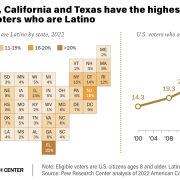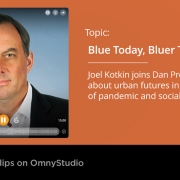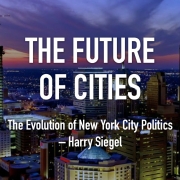2024 Will Be the Latino Election
The key voting bloc in American politics is not the black or Evangelical vote – it’s the Latinos. Now by far the largest racial minority in the nation, Latinos are also the great contested electoral territory.
Latinos’ political trajectory is complex and increasingly uncertain. In the past, Democrats imagined that Latinos, being ‘people of colour’, would follow the African-American pattern of near-automatic allegiance to their party. Progressives in publications like Salon scoffed at the notion that Latinos would ever head to the right.
But Latinos leaving the Democrats is exactly what has been happening. Republican support among Hispanic voters has grown by 10 points since 2018. In fact, in 2020, the odious Donald Trump increased his share of the Latino vote by eight per cent to 39 per cent, the highest percentage for a Republican since George W Bush won 44 per cent in 2004. Trump improved his margins in 78 of the US’s 100 majority-Hispanic counties.
Latino identification with the Democrats, notes Gallup, now sits at its lowest level ever. A Reuters / Ipsos survey in December revealed that Trump might actually be leading Joe Biden among Latino voters. Even a close contest could be catastrophic for Biden. Indeed, if these trends persist, it will be hard to see how he can get a second term.
Where Latinos go politically is important not just this year but also for the foreseeable future. America’s Latino population grew by 23 per cent between 2010 and 2020 to 62million people. Latinos now account for 19 per cent of the US population. By 2030, they are expected to constitute 21 per cent. Moreover, Latinos are fuelling the US economy. In 1990, they accounted for just under 11million workers, a figure that rose to 29million by 2020, and is projected to reach nearly 36million by 2030.
Due to generally lower rates of electoral participation than other sections of American society, Latinos’ political power has tended to lag behind their economic heft. But this is changing. According to the National Association of Latino Elected and Appointed Officials, more than 17.5million Latino voters are expected to cast ballots this November nationwide, representing a 6.5 per cent increase on their turnout for the 2020 presidential election, and an increase of 38 per cent on their 2016 turnout. More than one in every 10 voters will be Latino this year.
Overall, the popular image of Latinos presented in the media, largely as gang members or oppressed workers, tells only a part of the story. Rather than angry ‘people of colour’ looking for an American version of Fidel Castro, their political orientation is ambiguous. Among recent Hispanic immigrants, notes one recent study, 62 per cent do not identify with either party.
Read the rest of this piece at Spiked.
Joel Kotkin is the author of The Coming of Neo-Feudalism: A Warning to the Global Middle Class. He is the Roger Hobbs Presidential Fellow in Urban Futures at Chapman University and and directs the Center for Demographics and Policy there. Learn more at joelkotkin.com and follow him on Twitter @joelkotkin.
Graph: Pew Research.






 D. Ramey Logan, used under CC 4.0 License
D. Ramey Logan, used under CC 4.0 License
